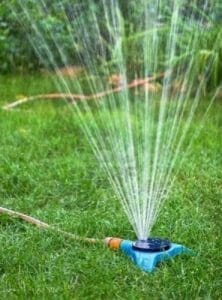While you are looking to improve the curb appeal of your home, you may be inadvertently doing harm to your trees. Here are some otherwise normal home care activities that you need to be cautious about.
1. Mowing your lawn. Most homeowners think nothing of bumping against their trees when mowing their lawns. But it can have a devastating effect on them. Referred to as mower blight, lawnmowers and weed trimmers can wound tree bark, especially in the spring and fall, when bark is most vulnerable to slippage.
When bark is damaged, trees have difficulty transporting nutrients to the roots. Also, the roots can’t transport water up to the rest of the tree.
2. Watering the grass. Watering your lawn is also beneficial to your trees… if you do it right. Depending on the species of tree, age and various other factors, it will need the equivalent of about an inch of water every week.
If you’re watering your lawn in excess, you can be doing more harm than good for your trees. Too much water promotes fungal growth that can be deadly to your trees.
As temperature dip this fall and winter, be careful about watering your lawn only when above 40 degrees Fahrenheit. Do so in the middle of the day so there’s time to soak into the soil before temperatures dip at night. Fortunately, this is not a problem we have to endure in the Northwest do to our naturally wet fall and winter weather.
3. Turf chemicals. What’s good for your grass, is not always good for your trees. Commercial lawn products, such as fertilizers and weed killers, can be absorbed through the roots, compromising your tree’s health. Your tree may experience stunted growth and become susceptible to disease or death.
4. Raking up leaves. When leaves begin to fall from your trees this fall, don’t just rake them away – you’re robbing your tree of vital nutrients. So instead, mow over the leaves and use them to as mulch for your trees.
5. Patching cracks in concrete and asphalt. There are a number of ways to address the problem of cracked sidewalks, some of which may have a negative impact on the tree’s health. When you have a tree’s roots breaking through the pavement of a passing sidewalk, that’s the tree’s way of telling you it’s seeking oxygen. If you try to just patch up the cracks, you are cutting off its much needed oxygen supply.
Obviously, your home and yard need to be taken care of, just not at the expense of your trees. If you have any questions or need help with a tree that’s already showing signs of distress, give us a call. Considering artificial turf and tree health can also guide decisions about landscape upgrades without harming your trees.